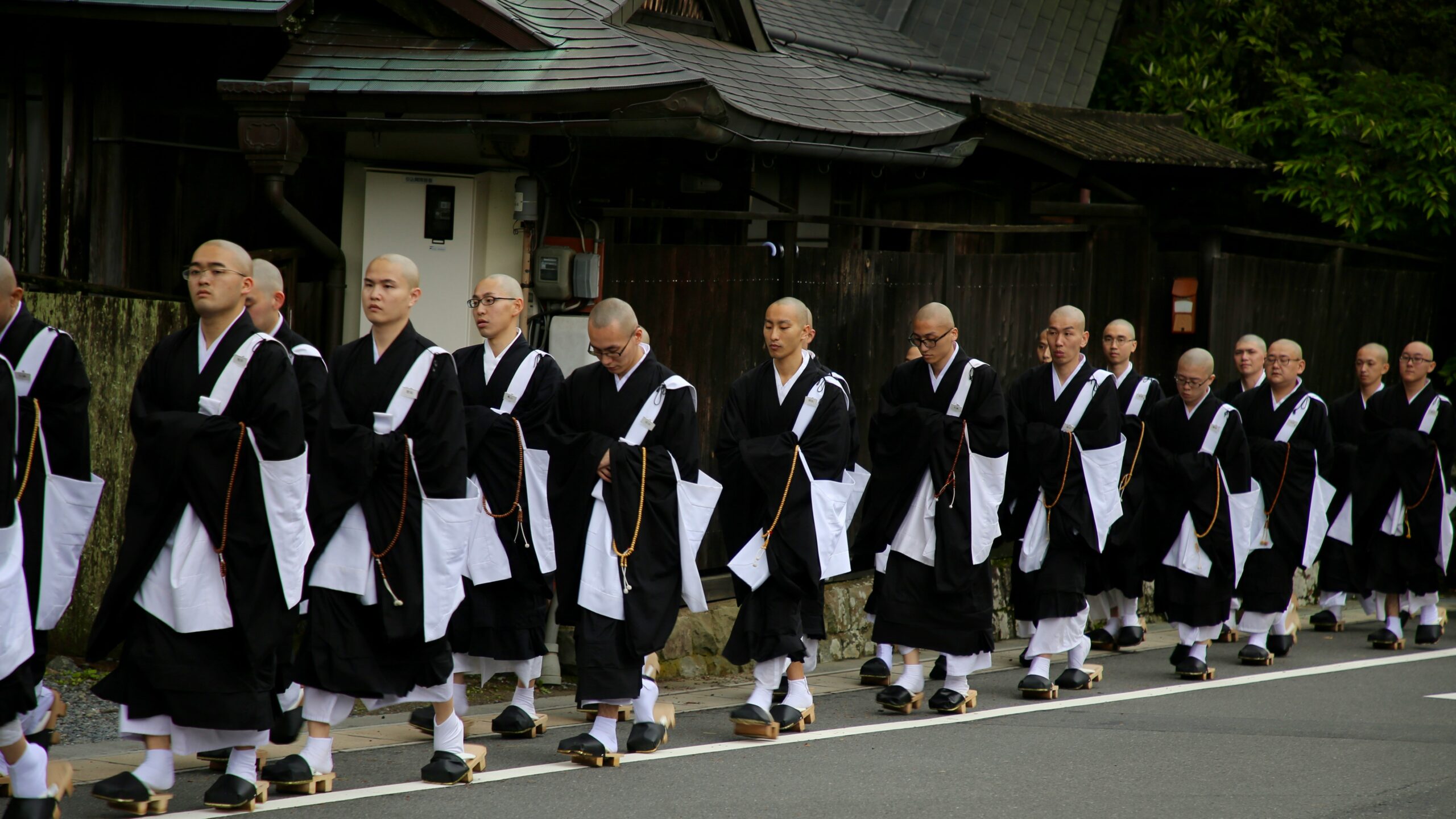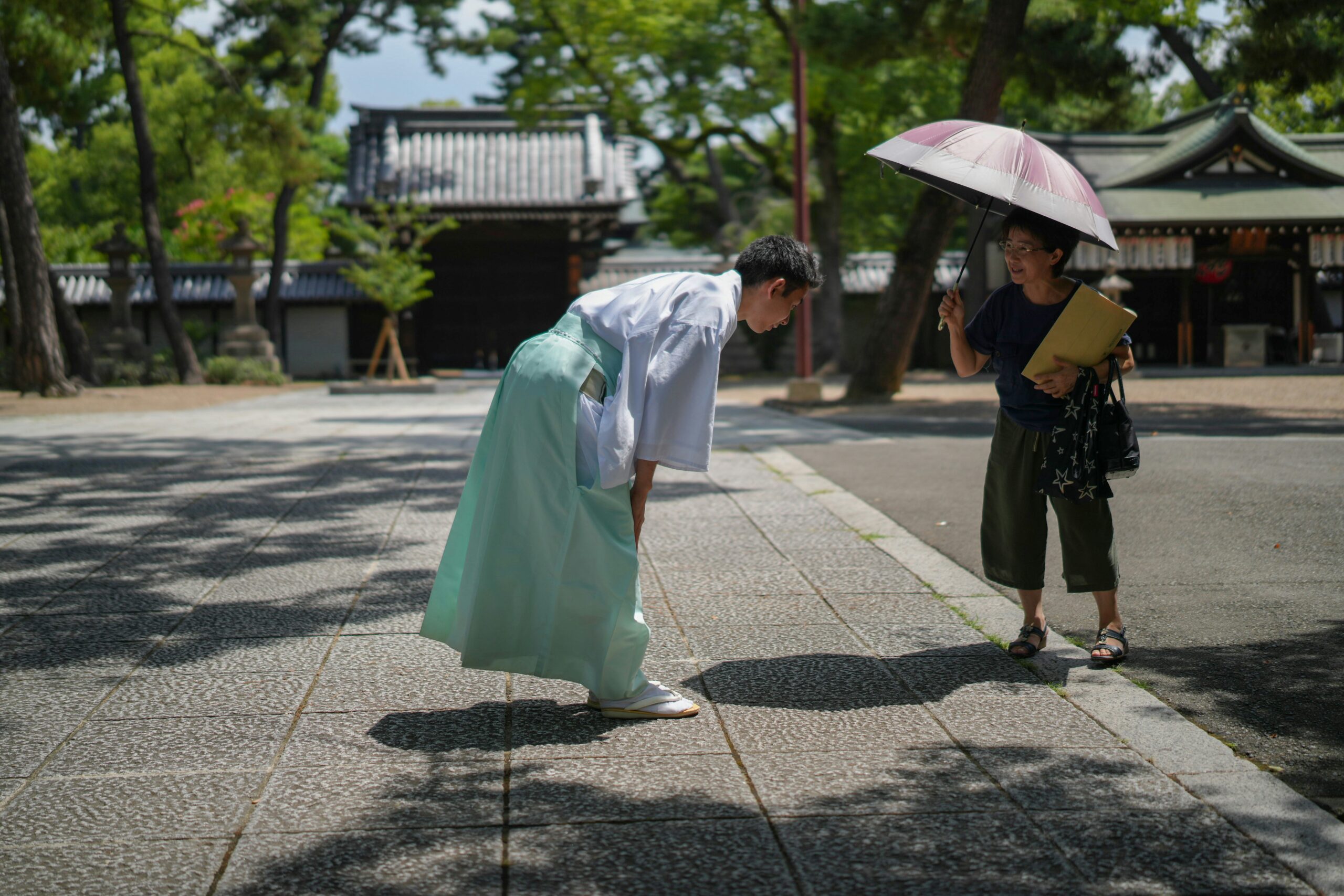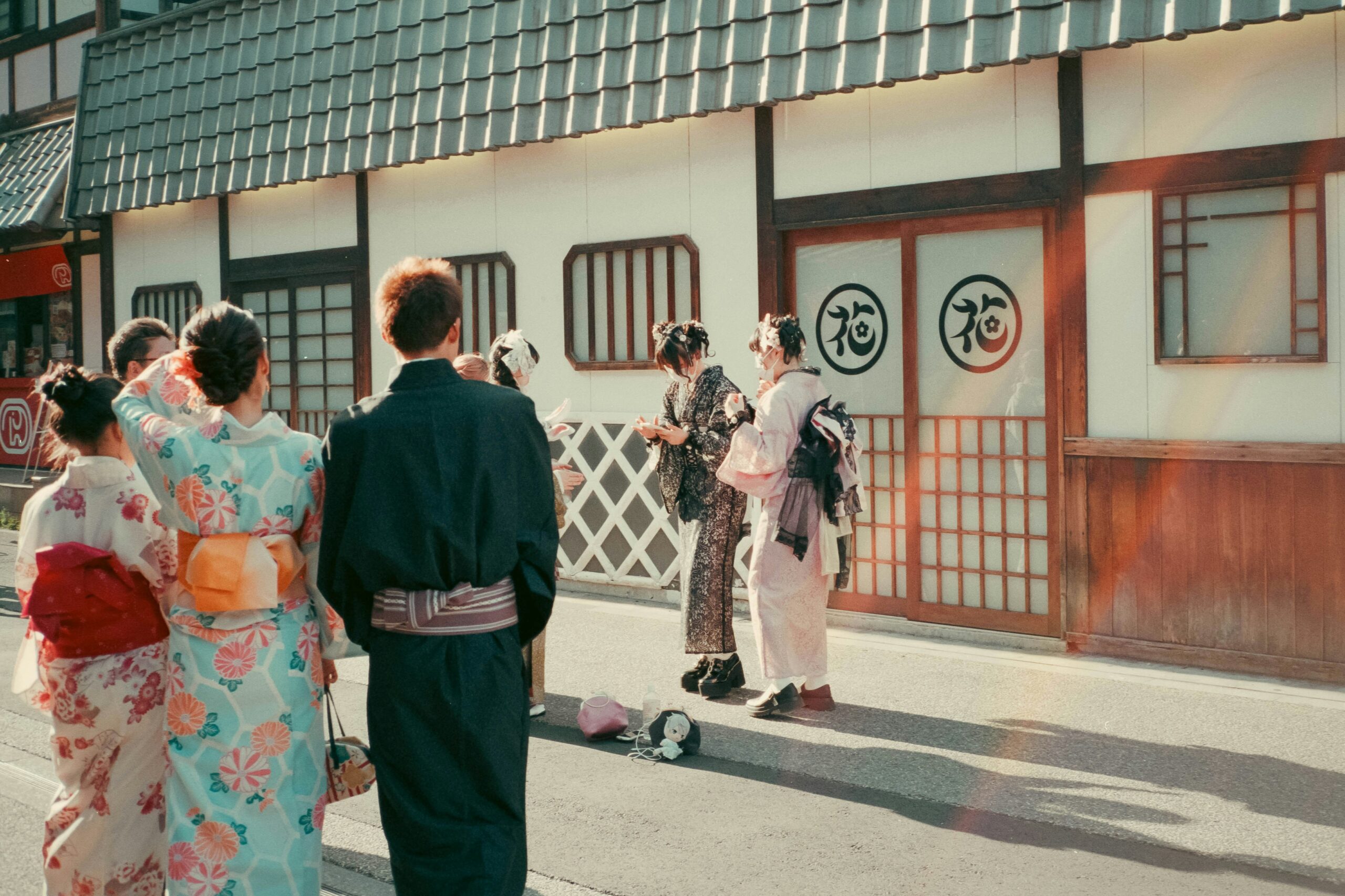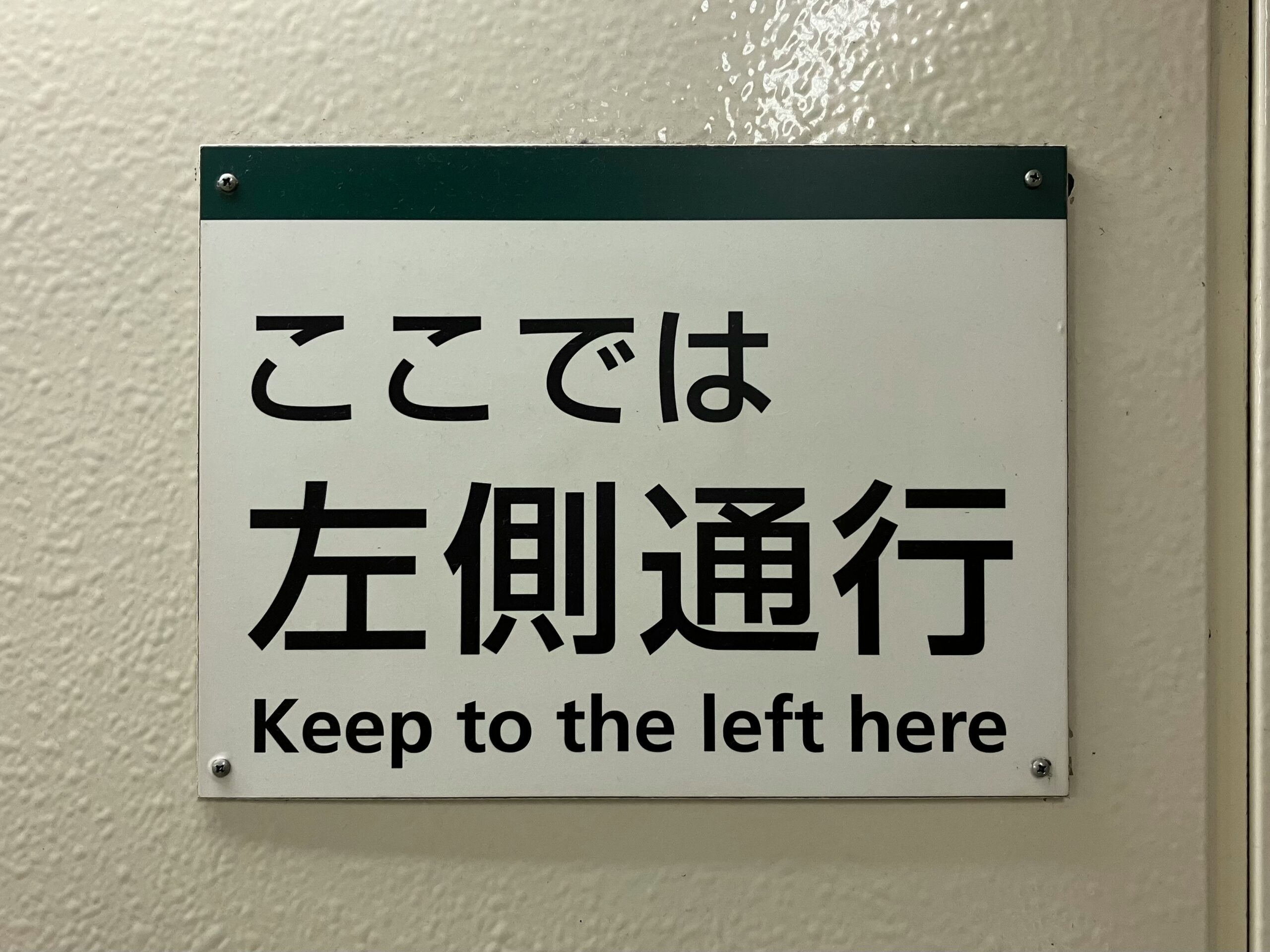When people think of Japanese greetings and etiquette, one of the first things that comes to mind is bowing. It’s such a simple gesture, but it holds a lot of meaning — and it’s not the only way respect is shown in everyday life.
In Japan, greetings, gestures, and honorifics form the foundation of how people interact politely. Whether you’re walking into a shop, meeting someone new, or just handing something over, knowing how to carry yourself makes a big difference.
This blog covers the basics of bowing etiquette, common greetings you’ll hear everywhere, and the subtle but important ways people show respect day-to-day — especially as a foreigner who’s still learning.
If you’re planning to visit, live, or work in Japan, understanding these basics will help you blend in better and avoid awkward moments.

🌀 Bowing – It’s More Than Just a Nod…
Bowing in Japan isn’t just a hello or goodbye — it’s a core part of communication. People bow to say thanks, to apologise, to greet someone, to show respect, or even during business deals.
There are different types of bows depending on the situation:
- 15-degree bow (eshaku): A light nod of the head. This is used for casual greetings like when entering a shop or passing a coworker in the hallway.
- 30-degree bow (keirei): A standard, respectful bow. You’ll use this when meeting someone for the first time or in a slightly formal setting.
- 45-degree bow (saikeirei): A deep bow used in serious situations — like apologising or expressing deep gratitude.
And while no one expects foreigners to bow perfectly, putting in the effort shows you’re trying to respect the culture, which always goes a long way.
💡Pro Tip: Bowing while talking isn’t common — and definitely don’t do it while walking or laughing. Pause, bow, and then continue. It’s all about being intentional and present.

🔊 Common Japanese Greetings You’ll Hear Daily
Even if you’re just starting to learn Japanese, mastering a few key greetings can completely change how people respond to you. These phrases are used all the time, and using them properly can leave a really good impression:
- こんにちは (Konnichiwa) – Hello / Good afternoon
- おはようございます (Ohayou gozaimasu) – Good morning (casual: おはよう)
- こんばんは (Konbanwa) – Good evening
- いってきます / いってらっしゃい (Ittekimasu / Itterasshai) – I’m off / Take care (used between people at home when someone leaves)
- ただいま / おかえりなさい (Tadaima / Okaerinasai) – I’m home / Welcome back
- お疲れ様です (Otsukaresama desu) – Literally “you must be tired” but used in the workplace to show appreciation or say goodbye
- 失礼します (Shitsurei shimasu) – Excuse me (used before leaving a meeting or entering a room)
Even just using a cheerful “arigatou gozaimasu” when leaving a shop or saying “sumimasen” to get someone’s attention shows you’ve made the effort.
💬 Bonus tip: A simple smile and a small nod with your greeting already gets you halfway there 😊

🧑🏫 Honorifics – What’s With All the “-san” Stuff?
In Japan, how you refer to someone’s name really matters — and using honorifics is a big part of everyday speech. You’ll hear people add “-san” to names all the time, and there are actually a bunch of these name endings, each showing different levels of respect or familiarity.
Here are some of the most common ones:
- さん (-san) – The all-purpose polite one. Use this for pretty much anyone you’re not super close to. It’s safe and respectful.
- ちゃん (-chan) – A cute and casual one, usually for kids or close friends. Definitely don’t use this at work or with people you don’t know well.
- くん (-kun) – Usually used for younger guys or in casual settings (often from a senior to a junior).
- さま (-sama) – Super formal and respectful. You’ll see this used in customer service or when someone’s really being polite (like in emails, or even for gods or royalty).
- せんぱい / こうはい (senpai / kouhai) – Not technically honorifics, but these are titles based on seniority in schools or companies.
When in doubt, stick with “-san” — it’s like the “Mr/Ms” of Japanese and always a safe bet. And don’t add it to your own name! That’s a common mistake foreigners make early on 😅

💡 Everyday Respect – The Small Things Matter
Okay, so this is something I picked up just from talking to friends in Japan, watching videos, and browsing through guides online — but it’s clear that Japanese social rules are mostly unspoken, and it’s the small things that make a big difference.
Here are a few real-life respect tips that I’ve taken note of:
- Be quiet in public places. Especially on trains — even phone calls are a no-go 🚫
- Hand things over with both hands, especially money, ID, or anything formal. It shows care and respect.
- Don’t point. If you’re gesturing toward something, use your whole hand or nod in the direction.
- Take off your shoes when entering someone’s home (or even some indoor spaces like fitting rooms or traditional restaurants).
- Avoid being too direct. In general, Japanese people value harmony, so it’s better to phrase things politely even when declining.
Most foreigners visiting Japan usually make a lot of the mistakes on this list in some way 😂 But it’s okay! — what matters is showing effort, curiosity, and a willingness to adjust.

🎯 Final Thoughts – Respect, Effort, and the Long Game
Navigating Japanese etiquette might feel intimidating at first — there are bowing angles, honorifics, quiet train rules, and unspoken social cues to keep up with. But honestly, no one expects you to be perfect from day one.
What matters most is showing respect, observing how others interact, and doing your best to adapt. People in Japan genuinely appreciate it when foreigners make the effort — even if you mess up sometimes (we all do 😅).
If you’re preparing to visit or live in Japan, I’d also recommend brushing up on cultural etiquette alongside your Japanese language studies. Platforms like Go! Go! Nihon actually help people prepare for life in Japan, and they often share tips on this stuff too — not just schools and visas!
So whether you’re studying at home or already booking your flight, just remember: be curious, stay humble, and enjoy the process. Respect is a two-way street, and your effort won’t go unnoticed 🇯🇵✨

